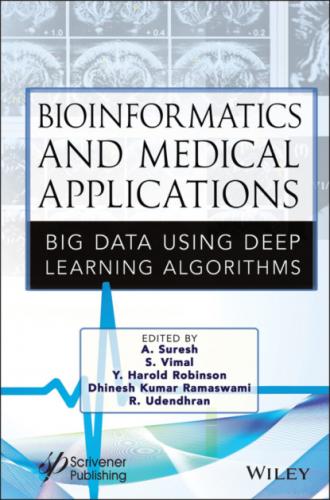Figure 3.3 Histograms SARS-CoV-2 structural proteins.
3.6 Future Implications
Non-supervised algorithms will play a major role in proteomics and genomics applications, as they can be run regardless of the time consumed in the computational platform; we have to bear in mind that, in most cases, the time they will take to search a specific pattern is unknown since the algorithms are non-linear metrics, and therefore, it is not possible to scale the processing time.
All non-supervised algorithms do not depend on any human intervention, so they run freely on a platform until they cast some conclusion. These processes may well be supported by a Hidden Markov Model (HMM) that enables the total control of all processes.
On the other hand, we consider that it will be necessary to reassess the metrics of the prediction programs, to explore differently the evaluation of proteins, both those stored in databases, and those identified in organic fluids that require a quick evaluation.
Metrics may also thoroughly explore only one characteristic and not several, like the method here presented, as we think it will be essential in the analysis of the new generation of algorithms, i.e., if the metric yields a number, it is very little information it provides; however, if it gives a vector, or a matrix, then the information can be considered exhaustive.
The proteomic and genomic for the production of pharmaceutical drugs will rapidly change to the design of biochips that will assess the proteins in organic fluids; this is a very important task, particularly for the latent threat the Coronaviridae family represents to humans due to its ability to disseminate and mutate.
A final observation about this subject is the advantage of the stochastic algorithm over the deterministic algorithm. Although the latter is more precise, they hardly offer any practical solution when the number of factors is large since the prediction of a biological microorganism is a multifactorial phenomenon, a deterministic algorithm will require huge memory and processing speed. Therefore, they will hardly provide a practical solution, as they will face the limitations of any computational architecture.
On the other hand, the stochastic functions are linear, which means that when evaluating multiple variables, the complexity will not increase, so these functions only give a probability value associated with the result, i.e., the associated value will be in the range between 0% a 100%.
3.7 Acknowledgments
The authors thank C. Celis-Juárez and L. Anderson-Coe for proof-reading. Funding: None. Contributions: Theoretical conceptualization and design: CP. Performance: CP. Data analysis: CP, GVA, and MFM. Discussion: CP, GVA, and MFM. Competing interests: We declare there are no financial and personal interests with other people or organizations that could inappropriately influence this work. Data availability: Copyright & Trademark. All rights reserved (México), 2018: Polarity Index Method®. Software and Hardware: Hardware: The computational platform used was two HP Workstations z21400 — CMT — 4 x Intel Xeon E3-1270/3.4 GHz (Quad-Core) — RAM 8/4 GB — SSD 1 x 160 GB — DVD SuperMulti — Quadro 2000 — Gigabit LAN, Linux Fedora 64-bits. Cache Memory 8 MB. Cache Per Processor 8 MB. RAM 8/4. Software: Polarity Index Method (PIM®). Supplementary Materials can be asked to ([email protected]).
References
1. CDC, Human coronavirus types, National Center for Immunization and Respiratory Diseases (NCIRD), Division of Viral Diseases, Human coronarivus types section. Available at: https://www.cdc.gov/coronavirus/types.html. Last Updated February 15, 2020. Accessed November 22, 2021. 2020, https://www.cdc.gov/coronavirus/types.html.
2. Wikipedia contributors. Coronavirus. Wikipedia, The Free Encyclopedia. November 20, 2021, 05:45 UTC. Available at: https://en.wikipedia.org/w/index.php?title=Coronavirus&oldid=1056173146. Accessed November 22, 2021.
3. Wikipedia contributors. Human coronavirus NL63. Wikipedia, The Free Encyclopedia. August 22, 2021, 00:48 UTC. Available at: https://en.wikipedia.org/w/index.php?title=Human_coronavirus_NL63&oldid=1039988099. Accessed November 22, 2021.
4. World Health Organizacion, Middle East respiratory syndrome coronavirus (MERS-CoV) section, Available at: https://www.who.int/news-room/factsheets/detail/middle-east-respiratory-syndrome-coronavirus-(mers-cov). March 11, 2019. Accessed: November 22, 2021.
5. Wikipedia contributors. Human coronavirus HKU1 [Internet]. Wikipedia, The Free Encyclopedia; 2021 Nov 17, 12:27 UTC [cited 2021 Nov 22]. Available from: https://en.wikipedia.org/w/index.php?title=Human_coronavirus_HKU1&oldid=1055721823. Accessed: November 22, 2022.
6. World Health Organizacion, Severe Acute Respiratory Syndrome (SARS) section, Available at: https://www.who.int/health-topics/severe-acute-respiratory-syndrome#tab=tab_1. March 11, 2019. Accessed: November 22, 2021.
7. National Center for Immunization and Respiratory Diseases (NCIRD), Division of Viral Diseases, Coronavirus disease (COVID-19) section. Available at: https://www.who.int/health-topics/coronavirus#tab=tab3. Last Updated February 15, 2020. Accessed November 22, 2021.
8. The UniProt Consortium UniProt: the universal protein knowledgebase in 2021 Nucleic Acids Res. 49:D1 (2021). Available at: https://www.uniprot.org/proteomes/-query=adenoviridae&fil=reference%3Ayes&sort=score. Accessed: November 22, 2021.
*Corresponding author: [email protected]
Конец ознакомительного фрагмента.
Текст предоставлен ООО «ЛитРес».
Прочитайте эту книгу целиком, купив полную легальную версию на ЛитРес.
Безопасно оплатить книгу можно банковской картой Visa, MasterCard, Maestro, со счета мобильного телефона, с платежного терминала, в салоне МТС или Связной, через PayPal, WebMoney, Яндекс.Деньги,
